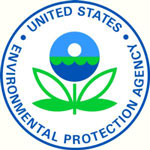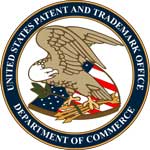Showing Spotlights 9 - 16 of 19 in category All (newest first):
 Graphene is undoubtedly emerging as the most promising nanomaterial because of its unique combination of superb properties, which opens a way for its exploitation in a wide spectrum of applications. However, it has to overcome a number of obstacles before we can realize its full potential for practical applications. One of the greatest challenges being faced today in commercializing graphene is how to produce high quality material, on a large scale at low cost, and in a reproducible manner. The major hurdle in manufacturing graphene on an industrial scale is the process complexity and the associated high cost of its production, which results in expensive product. In the present article, an attempt has been made to carry out an extensive survey and analysis of global patents pertaining to the various processes of graphene synthesis.
Graphene is undoubtedly emerging as the most promising nanomaterial because of its unique combination of superb properties, which opens a way for its exploitation in a wide spectrum of applications. However, it has to overcome a number of obstacles before we can realize its full potential for practical applications. One of the greatest challenges being faced today in commercializing graphene is how to produce high quality material, on a large scale at low cost, and in a reproducible manner. The major hurdle in manufacturing graphene on an industrial scale is the process complexity and the associated high cost of its production, which results in expensive product. In the present article, an attempt has been made to carry out an extensive survey and analysis of global patents pertaining to the various processes of graphene synthesis.
Jun 28th, 2012
 Curcumin is the star bioactive component responsible for turmeric's antioxidant, anti-inflammatory and anticancer properties. Recently, it has emerged as one of the most potent chemo-preventive and chemotherapeutic agents. Consequently, there has been a steep rise in the number of research publications and patents starting from the year 2000 onwards. This article presents the findings of a literatre survey and patent analysis on nano-enabled curcumin. There is an upward trend in patenting and publishing activities, which is especially noteworthy from 2007 onwards. One intriguing fact is that the patenting activity is showing a dominating trend in comparison with the scientific research activity suggesting the growing commercial importance of nano-enabled curcumin.
Curcumin is the star bioactive component responsible for turmeric's antioxidant, anti-inflammatory and anticancer properties. Recently, it has emerged as one of the most potent chemo-preventive and chemotherapeutic agents. Consequently, there has been a steep rise in the number of research publications and patents starting from the year 2000 onwards. This article presents the findings of a literatre survey and patent analysis on nano-enabled curcumin. There is an upward trend in patenting and publishing activities, which is especially noteworthy from 2007 onwards. One intriguing fact is that the patenting activity is showing a dominating trend in comparison with the scientific research activity suggesting the growing commercial importance of nano-enabled curcumin.
Dec 22nd, 2011
 The efforts undertaken in developing renewable energy sources to reduce our dependence on fossil fuels include major research and investment in advanced electricity storage technologies. Among the various existing technologies, lithium batteries are considered as the most competitive power source because of their high energy density, superior power capability, design flexibility and longer lifespan. This article provides an overview of the current patent landscape of rechargeable Li-ion battery, with a focus on the recent developments on nanomaterials and nanotechnologies used for anode, cathode, and electrolyte materials, and the impact of nanomaterials on the performance of rechargeable lithium batteries. Effort has also been taken to identify key players, emerging trends and applications in this area.
The efforts undertaken in developing renewable energy sources to reduce our dependence on fossil fuels include major research and investment in advanced electricity storage technologies. Among the various existing technologies, lithium batteries are considered as the most competitive power source because of their high energy density, superior power capability, design flexibility and longer lifespan. This article provides an overview of the current patent landscape of rechargeable Li-ion battery, with a focus on the recent developments on nanomaterials and nanotechnologies used for anode, cathode, and electrolyte materials, and the impact of nanomaterials on the performance of rechargeable lithium batteries. Effort has also been taken to identify key players, emerging trends and applications in this area.
Jul 1st, 2011
 How to regulate nanotechnology and the application of nanomaterials has been quite a controversial issue in recent years. While for instance non-governmental organizations (NGOs) like Greenpeace and Friends of the Earth consider the existing regulatory situation to be inadequate and are urging a strictly precautionary approach, industry representatives are instead seeking the development of specific guidance and standards to support implementation of existing regulations, which are generally seen as adequate. Researchers have used Multicriteria Mapping (MCM) to study why some regulatory options - bans, moratoriums, voluntary measures, etc. - are deemed to be acceptable/unacceptable by various stakeholders in the U.S. and the criteria they use to evaluate the different regulatory options. Not surprisingly, the largest difference in ranking of the policy options can be observed between environmental NGOs and the representatives from the industrial companies and the trade association.
How to regulate nanotechnology and the application of nanomaterials has been quite a controversial issue in recent years. While for instance non-governmental organizations (NGOs) like Greenpeace and Friends of the Earth consider the existing regulatory situation to be inadequate and are urging a strictly precautionary approach, industry representatives are instead seeking the development of specific guidance and standards to support implementation of existing regulations, which are generally seen as adequate. Researchers have used Multicriteria Mapping (MCM) to study why some regulatory options - bans, moratoriums, voluntary measures, etc. - are deemed to be acceptable/unacceptable by various stakeholders in the U.S. and the criteria they use to evaluate the different regulatory options. Not surprisingly, the largest difference in ranking of the policy options can be observed between environmental NGOs and the representatives from the industrial companies and the trade association.
Jul 26th, 2010
 Much of EPA's focus over the past several years has been aimed at filling information gaps and gathering more data regarding the potential risks associated with nanomaterials, mostly through voluntary programs and agency-funded research. Recently, EPA has moved to quicken the pace of its regulatory efforts, through a series of actions taken under the authority of the Toxic Substances Control Act (TSCA). The agency has also fired a clear shot across the bow of the nanotechnology industry, warning producers and importers of nanoscale materials that the agency intends to pursue enforcement actions against companies that fail to heed EPA's new focus on regulating nanomaterials under TSCA. In light of these developments, companies with an interest in nanotechnology may want to reexamine the agency's recent regulatory initiatives, in order to gain a better understanding of how those actions might affect them.
Much of EPA's focus over the past several years has been aimed at filling information gaps and gathering more data regarding the potential risks associated with nanomaterials, mostly through voluntary programs and agency-funded research. Recently, EPA has moved to quicken the pace of its regulatory efforts, through a series of actions taken under the authority of the Toxic Substances Control Act (TSCA). The agency has also fired a clear shot across the bow of the nanotechnology industry, warning producers and importers of nanoscale materials that the agency intends to pursue enforcement actions against companies that fail to heed EPA's new focus on regulating nanomaterials under TSCA. In light of these developments, companies with an interest in nanotechnology may want to reexamine the agency's recent regulatory initiatives, in order to gain a better understanding of how those actions might affect them.
Sep 1st, 2009
 A recent report gives an overview of how five jurisdictions (US, UK, EU, Australia and Canada) reacted to the recent emergence of nanotechnology-based products in the marketplace and it describes how this triggered activities in three domains: (a) public and stakeholder debate, (b) development of initial policy options, and (c) the management of regulatory development in a situation of scarce data. The bulk of the report describes the current situation (up to March 2009) in the five jurisdictions and this part doesn't contain information that hasn't already been covered elsewhere. In analyzing this data, however, the authors make some interesting observations and attempt to develop a set of six key regulatory governance principles that they propose for consideration by regulators.
A recent report gives an overview of how five jurisdictions (US, UK, EU, Australia and Canada) reacted to the recent emergence of nanotechnology-based products in the marketplace and it describes how this triggered activities in three domains: (a) public and stakeholder debate, (b) development of initial policy options, and (c) the management of regulatory development in a situation of scarce data. The bulk of the report describes the current situation (up to March 2009) in the five jurisdictions and this part doesn't contain information that hasn't already been covered elsewhere. In analyzing this data, however, the authors make some interesting observations and attempt to develop a set of six key regulatory governance principles that they propose for consideration by regulators.
May 25th, 2009
 Companies manufacturing, using, or selling nanoproducts in the Unites States would be well-served, at this early stage, to think proactively about minimizing future litigation risks. Candidly, the legal world has thus far lagged behind the growth in nano-related products and enterprises. But if the encyclopedic history of toxic tort, product liability, and environmental litigation in this country is any guide whatsoever, there is no reason enterprising plaintiffs' attorneys are less likely to tackle nanotechnology than other lucrative products and technological advances. Indeed, references to a potential link between carbon nanotubes and lung cancer have already sprouted on plaintiff-oriented websites across the country.
Companies manufacturing, using, or selling nanoproducts in the Unites States would be well-served, at this early stage, to think proactively about minimizing future litigation risks. Candidly, the legal world has thus far lagged behind the growth in nano-related products and enterprises. But if the encyclopedic history of toxic tort, product liability, and environmental litigation in this country is any guide whatsoever, there is no reason enterprising plaintiffs' attorneys are less likely to tackle nanotechnology than other lucrative products and technological advances. Indeed, references to a potential link between carbon nanotubes and lung cancer have already sprouted on plaintiff-oriented websites across the country.
Dec 17th, 2008
 Complex technical and scientific issues means complex intellectual property issues. This especially is the case with nanotechnologies, which are not easy to classify. Patents are of critical importance for start-ups and smaller companies because they may help in negotiations over infringement of their patents during competitive posturing with larger corporations. There is also ample evidence that companies, start-ups, and universities are ascribing ever-greater value and importance to patents. Increasingly, they are willing to risk a larger part of their budgets to acquire and defend patents. A new book on bionanotechnology lists nine key considerations and strategies that bionanotechnology inventors must follow in order to adequately protect an invention even before a patent application is drafted or filed.
Complex technical and scientific issues means complex intellectual property issues. This especially is the case with nanotechnologies, which are not easy to classify. Patents are of critical importance for start-ups and smaller companies because they may help in negotiations over infringement of their patents during competitive posturing with larger corporations. There is also ample evidence that companies, start-ups, and universities are ascribing ever-greater value and importance to patents. Increasingly, they are willing to risk a larger part of their budgets to acquire and defend patents. A new book on bionanotechnology lists nine key considerations and strategies that bionanotechnology inventors must follow in order to adequately protect an invention even before a patent application is drafted or filed.
Sep 15th, 2008
 Graphene is undoubtedly emerging as the most promising nanomaterial because of its unique combination of superb properties, which opens a way for its exploitation in a wide spectrum of applications. However, it has to overcome a number of obstacles before we can realize its full potential for practical applications. One of the greatest challenges being faced today in commercializing graphene is how to produce high quality material, on a large scale at low cost, and in a reproducible manner. The major hurdle in manufacturing graphene on an industrial scale is the process complexity and the associated high cost of its production, which results in expensive product. In the present article, an attempt has been made to carry out an extensive survey and analysis of global patents pertaining to the various processes of graphene synthesis.
Graphene is undoubtedly emerging as the most promising nanomaterial because of its unique combination of superb properties, which opens a way for its exploitation in a wide spectrum of applications. However, it has to overcome a number of obstacles before we can realize its full potential for practical applications. One of the greatest challenges being faced today in commercializing graphene is how to produce high quality material, on a large scale at low cost, and in a reproducible manner. The major hurdle in manufacturing graphene on an industrial scale is the process complexity and the associated high cost of its production, which results in expensive product. In the present article, an attempt has been made to carry out an extensive survey and analysis of global patents pertaining to the various processes of graphene synthesis.
 Subscribe to our Nanotechnology Spotlight feed
Subscribe to our Nanotechnology Spotlight feed





